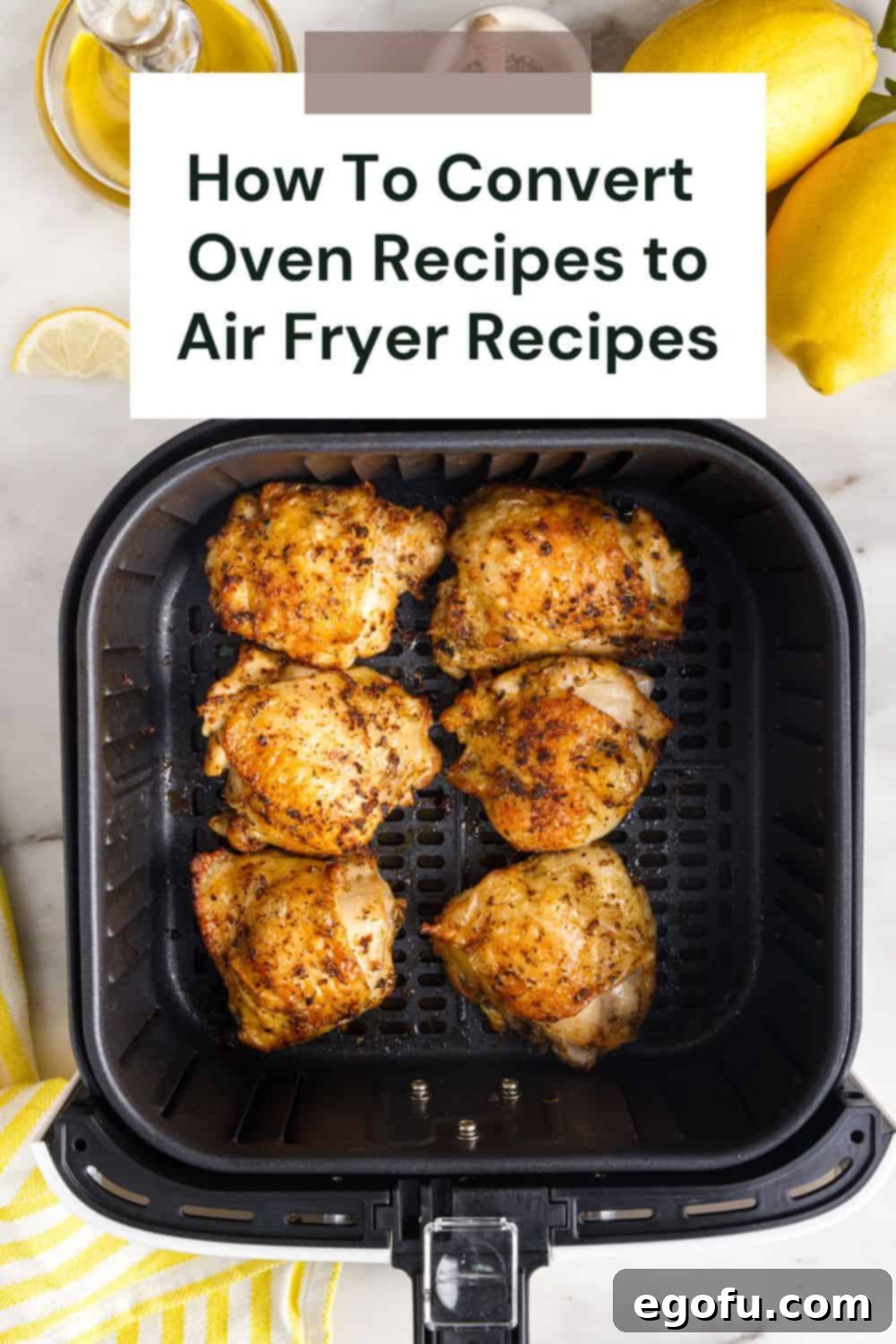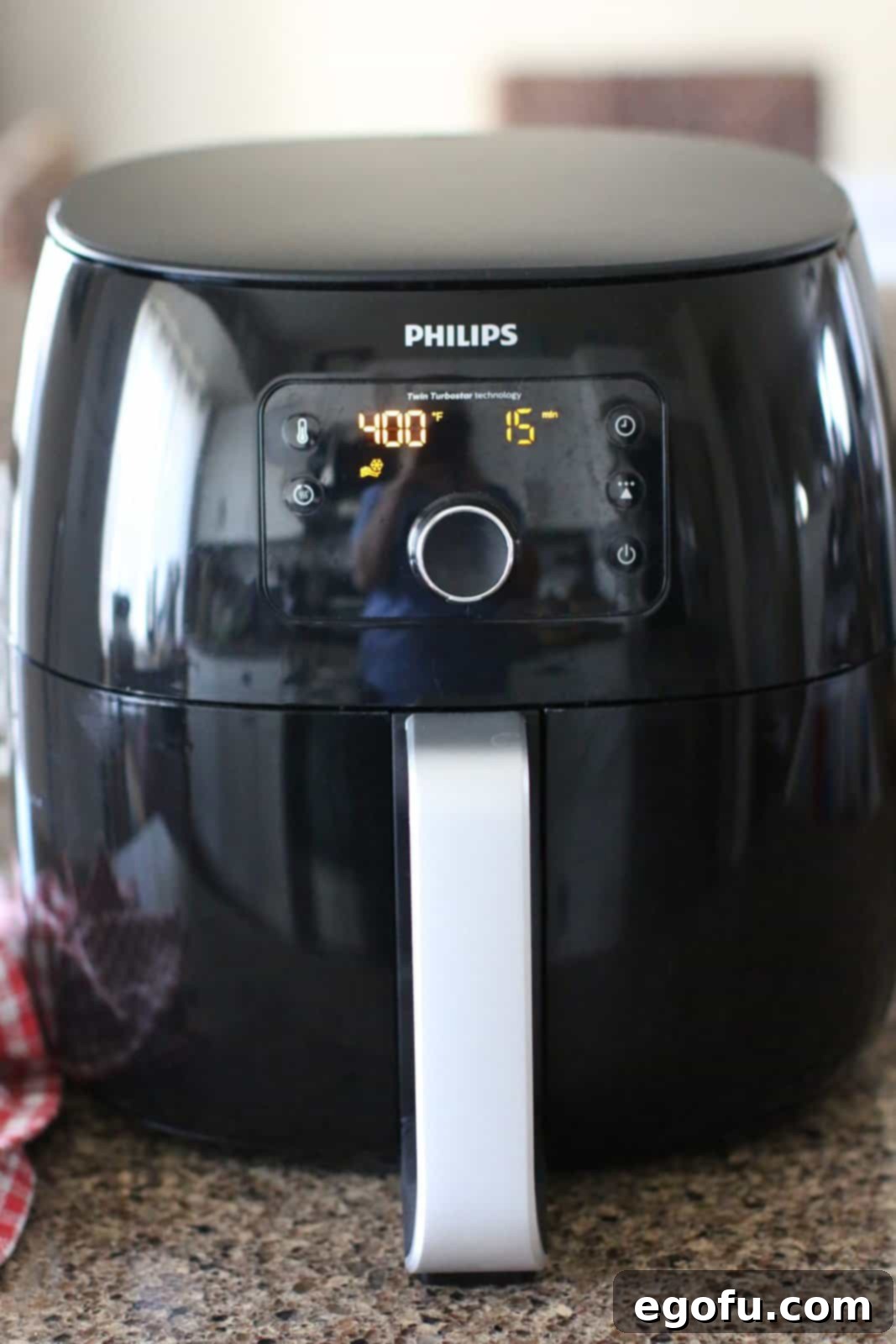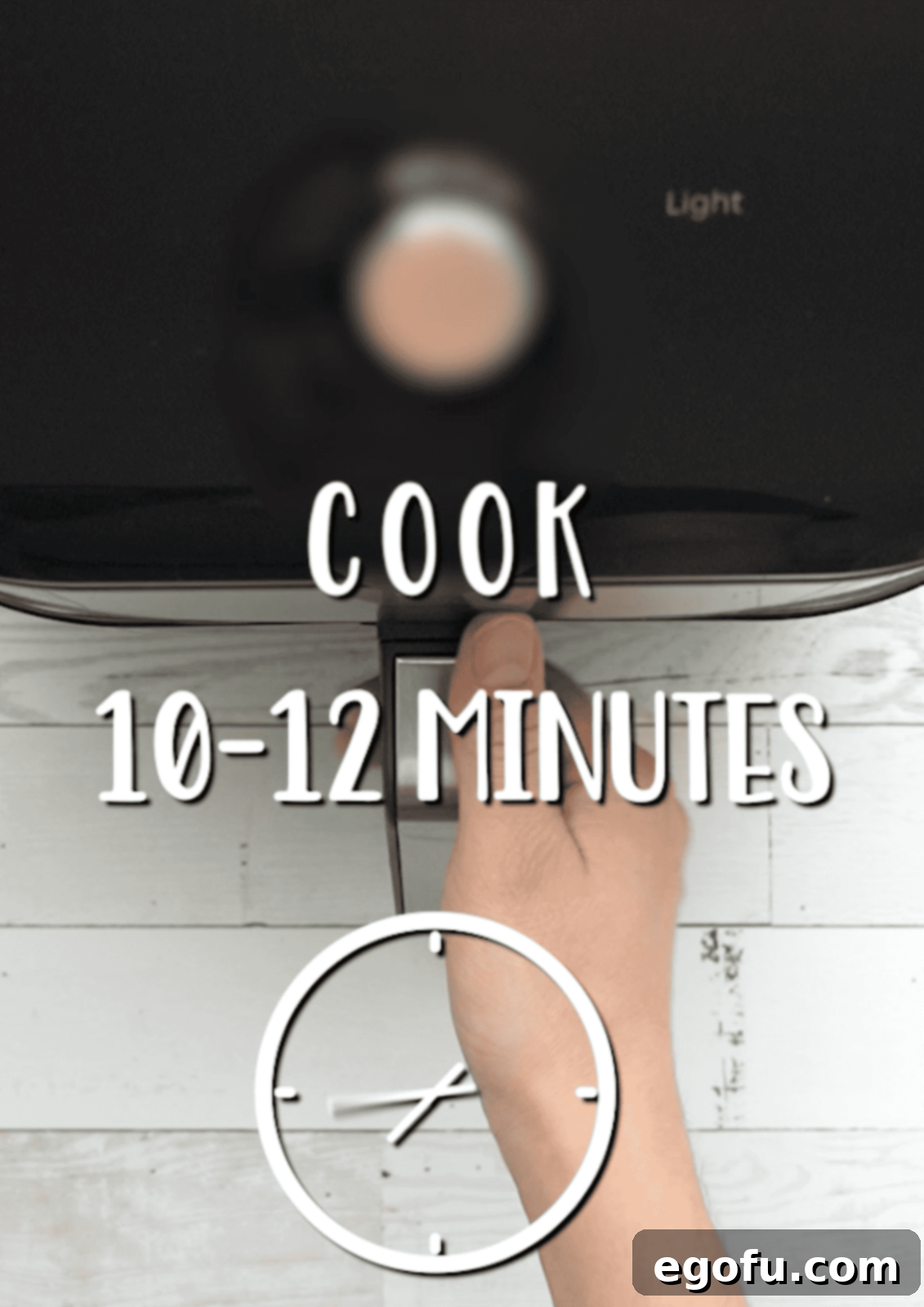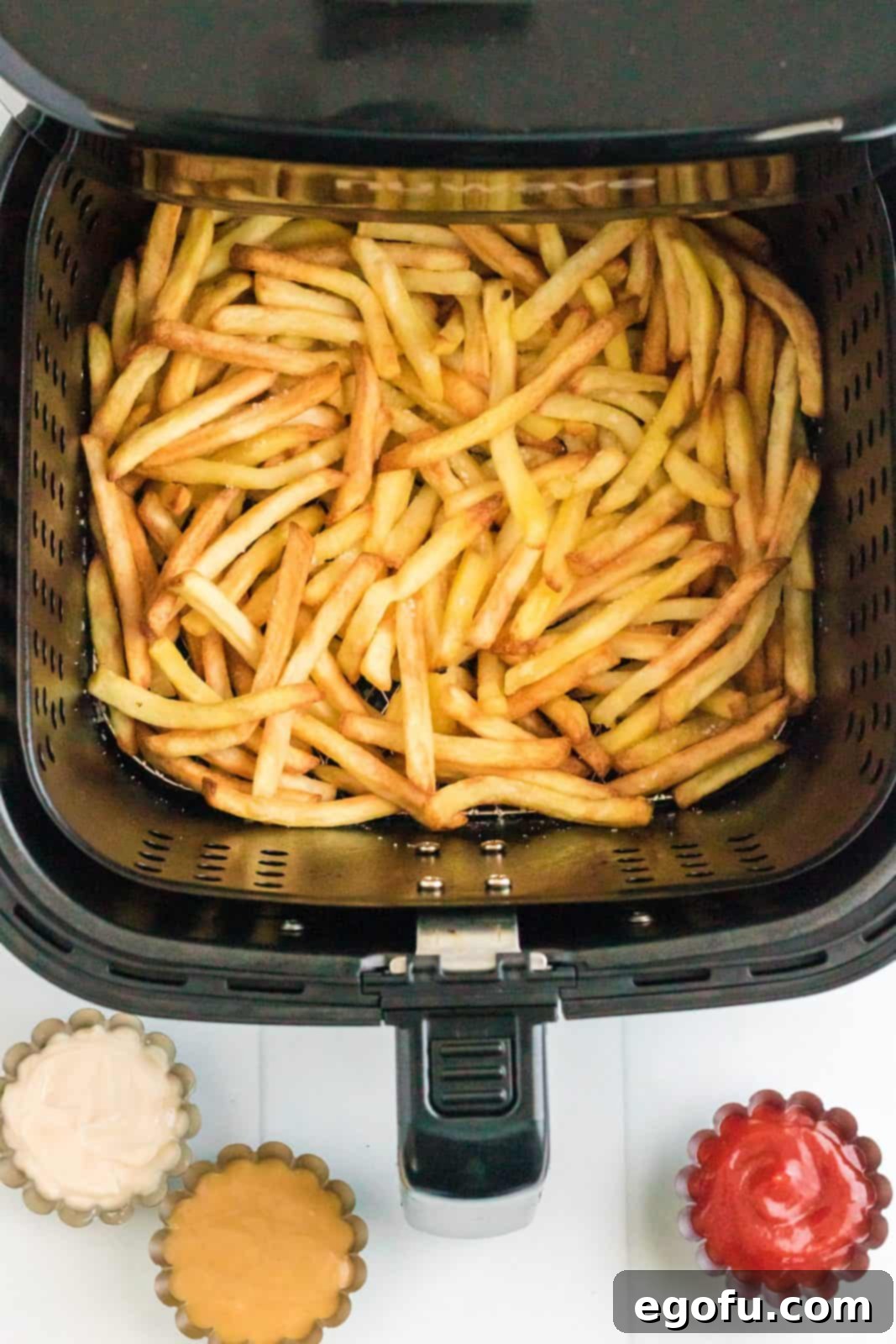Unlock the full potential of your kitchen and discover how effortlessly you can transform your cherished oven recipes into delicious, healthier, and incredibly crispy air fryer meals. Say goodbye to long cooking times and excessive oil, and hello to a new era of culinary convenience!
Mastering the Art of Air Fryer Conversions: It’s Simpler Than You Think
Air fryers have rapidly ascended to stardom in modern kitchens, celebrated for their ability to deliver oven-like crispiness with significantly less oil, all while dramatically cutting down cooking times. This innovative countertop appliance utilizes powerful hot air circulation to cook food quickly and evenly, mimicking the results of deep frying without the mess or added fat. It’s no wonder that countless home cooks are eager to adapt their favorite traditional oven recipes to this versatile gadget.
Whether you’re looking to achieve perfectly golden chicken wings, roasted vegetables with an irresistible crunch, or a quick weeknight dinner, understanding how to convert an oven recipe to an air fryer recipe is a game-changer. This comprehensive guide will walk you through the essential adjustments, offering practical tips and tricks to ensure your air-fried creations are nothing short of spectacular.

Why Switch from Oven to Air Fryer? Unveiling the Benefits
The decision to convert oven recipes to air fryer recipes brings a host of compelling advantages, enhancing both the quality of your meals and your cooking experience. Here’s a closer look at why more and more people are embracing air frying:
- Achieve Healthier, Crispier Results with Less Oil: The air fryer’s convection technology circulates hot air rapidly, effectively “frying” food with a fraction of the oil typically required for traditional methods. This means you can indulge in deliciously crispy textures—from golden fries to crunchy chicken—with significantly reduced fat content, making your meals a healthier choice without sacrificing flavor.
- Experience Faster and More Even Cooking: Thanks to its compact size and powerful fan, an air fryer reaches optimal cooking temperatures much quicker than a conventional oven. This concentrated heat environment translates to significantly reduced cooking times, often by 20-50%. Furthermore, the consistent airflow ensures that food cooks more uniformly, preventing common issues like unevenly cooked or burnt spots.
- Boost Energy Efficiency and Save Money: A smaller appliance heating up a smaller space means less energy consumption compared to heating a large oven. By using your air fryer for smaller meals or side dishes, you can significantly lower your electricity bill and contribute to a more energy-efficient kitchen. It’s an eco-friendly choice that also benefits your wallet.
- Enjoy Quick Cleanup: Most air fryer baskets and trays are designed with non-stick coatings and are often dishwasher-safe, making cleanup a breeze. This convenience is a major draw for busy individuals and families who want to enjoy home-cooked meals without dreading the post-dinner mess.
- Versatility for a Wide Range of Foods: Beyond French fries and chicken, air fryers are incredibly versatile. They can roast vegetables, bake small desserts, reheat leftovers to perfection, and even cook delicate items like fish and shrimp with ease, offering a vast array of culinary possibilities.
How to Seamlessly Convert Oven Recipes to Air Fryer Recipes
Converting your favorite oven recipes to the air fryer involves a few simple, yet crucial, adjustments. Once you understand these core principles, you’ll be able to adapt almost any recipe with confidence and achieve outstanding results.
Time needed: Approximately 5 minutes for conversion planning, plus cooking time.
Follow these essential tips and tricks to successfully convert oven recipes for your air fryer:
-
Adjust the Temperature Downwards
The concentrated heat and efficient air circulation of an air fryer mean it cooks hotter and faster than a conventional oven. Therefore, the first critical step is to decrease the temperature. A general rule of thumb is to reduce the oven’s recommended temperature by **25 to 50 degrees Fahrenheit (approximately 15-25 degrees Celsius)**. For instance, if an oven recipe suggests cooking at 425°F, set your air fryer to 400°F or even 375°F. Start with a 25°F reduction and observe how your food cooks. Over time, you’ll develop a feel for your specific air fryer’s cooking power.

-
Reduce the Cooking Time Significantly
Air fryers are renowned for their speed. You’ll need to reduce the cooking time considerably compared to an oven recipe. A good starting point is to reduce the original oven cooking time by **20-30%**. For quicker-cooking items or smaller batches, you might even reduce it by up to 50%. So, if an oven recipe calls for 15 minutes, aim for approximately 10-12 minutes in the air fryer. Always start with the lower end of your estimated time and check for doneness. Foods can cook much faster than anticipated, so it’s vital to monitor your dish closely to prevent overcooking or burning. A meat thermometer is indispensable for ensuring meats are cooked to safe internal temperatures.

-
Use the Right Nonstick Cooking Spray or Oil
While many air fryer baskets boast a non-stick coating, a light mist of cooking spray or a brush of oil is often beneficial to prevent food from sticking and to promote extra crispiness and browning. However, be cautious with aerosol cooking sprays (like Pam), as some brands contain propellants and additives that can build up and potentially damage the non-stick coating of your air fryer basket over time. Instead, opt for an **olive oil spray, avocado oil spray, or a reusable oil mister filled with your preferred cooking oil.** These are less likely to cause sticky residue and are easier on your air fryer’s interior, extending its lifespan and simplifying cleanup.

-
Shake the Basket or Flip Food for Even Cooking
To ensure thorough and even cooking, especially for smaller items like French fries, chicken nuggets, or chopped vegetables, it’s crucial to **shake the air fryer basket every few minutes (typically every 5-7 minutes)**. This redistributes the food, allowing all surfaces to be exposed to the hot circulating air. For larger items like chicken thighs, steaks, or fish fillets, instead of shaking, you’ll need to **flip the food halfway through the cooking process**. Always refer to specific air fryer recipes for guidance, as some dishes require more attention than others. Consistent shaking or flipping prevents one side from becoming overly crisp while the other remains undercooked.

-
Avoid Overcrowding the Basket
This is perhaps one of the most vital rules for air frying success. Air fryers rely on hot air circulating freely around the food to achieve that desired crispy texture. If you overcrowd the basket, you hinder this airflow, leading to steamed rather than crispy results. Cook in batches if necessary, ensuring a single layer of food with some space in between. Patience with batch cooking pays off in vastly superior texture and even cooking.
-
Consider Preheating (or Not)
While many air fryer recipes suggest preheating, it’s not always strictly necessary. Some foods benefit from a preheated air fryer (like baked goods or items that need an immediate crisp), while others, particularly those that cook quickly, might not require it. Check your recipe instructions or your air fryer’s manual. Preheating typically takes only 3-5 minutes, much faster than a conventional oven.
-
Adapt Your Seasoning
Because air fryers create a powerful circulating airflow, lighter seasonings like dried herbs can sometimes fly around and burn or stick to the heating element. Consider using slightly coarser spices, rubbing them into your food, or applying them after a light coat of oil to help them adhere. For fresh herbs, add them towards the end of the cooking cycle to prevent burning.
-
Utilize Air Fryer-Safe Accessories
Expand your air frying possibilities with various accessories. Small oven-safe baking dishes, ramekins, or silicone molds can be used for casseroles, eggs, or desserts. Skewers are perfect for kebabs. Always ensure any accessories you use are heat-safe and fit comfortably in your air fryer without obstructing airflow.
Frequently Asked Questions About Air Fryer Conversions
While the principles of temperature and time reduction largely apply to all air fryers, there are some nuances. Basket-style air fryers, which are the most common, typically have a powerful fan and heating element directly above the basket, creating a highly concentrated heat zone. Toaster oven-style air fryers, often larger, feature heating elements on the top and bottom and may include racks. They can sometimes cook even faster than basket models due to their larger capacity and multiple heating elements, so diligent monitoring is always key, especially when first adapting recipes. The main difference lies in capacity and how even the heat distributes across multiple racks.
Yes, you can use both parchment paper and aluminum foil in an air fryer, but with important caveats. If using parchment paper, always opt for perforated air fryer liners. These liners allow hot air to circulate freely around the food, which is essential for proper air frying. Never place empty parchment paper in a preheated air fryer, as it can fly up, hit the heating element, and pose a fire hazard. For aluminum foil, ensure it’s placed beneath the food and doesn’t cover too many holes in the basket, again to maintain airflow. Avoid allowing foil to touch the heating element. Both should be weighed down by food.
Absolutely! Cooking frozen food is one of the air fryer’s most celebrated capabilities and a primary reason for its popularity. Many companies now include specific air fryer instructions, temperatures, and cooking times directly on their frozen food packaging. Always check the back of the bag first for manufacturer recommendations, as these are often optimized for the best results. The air fryer excels at giving frozen items like fries, chicken nuggets, and fish sticks a deliciously crispy exterior.
While air fryers are incredibly versatile, not everything is suitable for this cooking method. Foods that are very wet or have a lot of liquid, like soups, stews, or dishes with thin batters, are generally not ideal as they can create a mess and prevent proper crisping. Whole roasts that require hours of cooking might also be better suited for a traditional oven due to capacity and cooking time. Furthermore, light, leafy greens can fly around and burn, and cheese that melts too quickly without a crust can also be problematic if not contained.
Generally, it’s best to avoid stacking food in a basket-style air fryer. For optimal crispiness and even cooking, food should be arranged in a single layer with sufficient space for hot air to circulate freely around each piece. Stacking food will steam it rather than crisp it. Some toaster oven-style air fryers come with multiple racks, allowing for more vertical space, but even then, ensure ample space between items for efficient cooking.
Not always. While some recipes call for preheating to ensure a hot start for foods like baked goods or those requiring an immediate crisp, many air fryer recipes, especially for quick-cooking items, do not require it. Air fryers heat up very quickly, so the impact of preheating is less significant than with a large conventional oven. Always check the specific recipe you are following, or your air fryer’s manual, for guidance. If in doubt, a quick 3-5 minute preheat won’t hurt most dishes.
Cleaning your air fryer regularly is crucial for its longevity and performance. Most air fryer baskets and trays are non-stick and often dishwasher-safe. For everyday cleaning, simply wash them with warm, soapy water and a soft sponge. For stubborn, baked-on food, soak the basket in warm soapy water for 15-20 minutes before gently scrubbing. The exterior can be wiped down with a damp cloth. Always ensure the unit is unplugged and cooled before cleaning. Avoid abrasive sponges or harsh chemicals that can damage the non-stick coating.
Conclusion: Embracing Your Air Fryer with Confidence
Converting oven recipes to air fryer recipes opens up a world of culinary possibilities, offering healthier, faster, and incredibly crispy meals. The key takeaways are simple yet powerful: **reduce the temperature by 25-50 degrees Fahrenheit and decrease the cooking time by 20-30%**. Always keep a watchful eye on your food, shake or flip it regularly, and avoid overcrowding the basket to ensure optimal air circulation. For raw meats, always cook until they reach the FDA-recommended internal temperatures for safety.
With these guidelines and a little experimentation, you’ll quickly master your air fryer and transform everyday meals into extraordinary culinary delights. Happy air frying!
Discover Delicious Air Fryer Recipes!
Air Fryer Cranberry Chicken Thighs
Air Fryer Roasted Cauliflower
Air Fryer Ranch Pork Chops
Air Fryer Garlic Parmesan Chicken Skewers
Air Fryer Halloumi
Air Fryer Ribs
- How to Convert Air Fryer Recipes to Oven Recipes
- Quick Guide: How to Soften Cream Cheese
- Essential Tip: How to Soften Butter Quickly
- Mastering Food Storage: How to Flash Freeze Food




